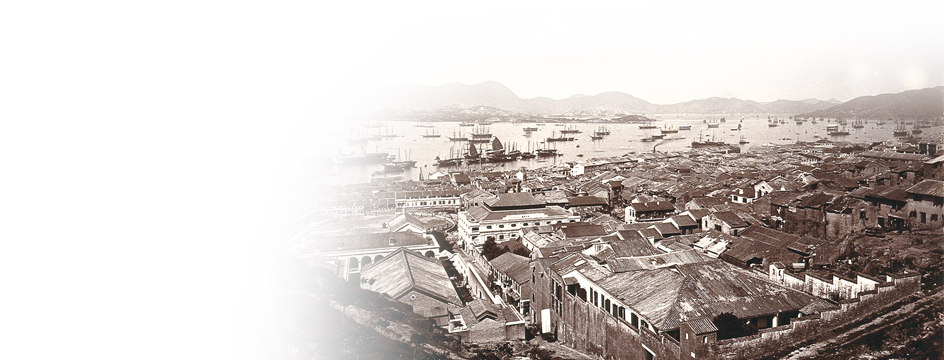
Historically, the area tucked above Hollywood Road in Sheung Wan was referred to as Taipingshan, a name you can no longer find on the modern map. One of the oldest quarters in Hong Kong, nowadays it is a hipster haven of indie boutiques, galleries, trendy cafes and bars, alongside funeral homes and cha chaan teng—an old soul with a young and vibrant vibe. However, back in the 19th century, it was a very different place.
When the Union Flag flew over Possession Point in 1841, the population of Hong Kong Island stood at only about 7,450, with close to a quarter dwelling on boats. “A barren island with hardly a house upon it.” Such was British Foreign Secretary Lord Palmerston’s disparaging remark about Hong Kong at that time. As Hong Kong’s population grew exponentially in the following decades, Taipingshan, a settlement for Chinese workers, became Hong Kong’s most densely-packed area. The tenement houses there were subdivided into tiny, windowless cubicles, each giving shelter to a few families. Public facilities were virtually non-existent. There was no water supply, no latrines, no proper drainage or ventilation. Streets were mired in filth and the stench was nauseating. The place was a hotbed of pathogens where diseases could spread like wildfire.
Located at the junction of Tai Ping Shan Street and Pound Lane, Kwong Fook I Tsz (廣福義祠) stands frozen in time, a rustic reminder of that bygone era. It was built in the 1850s to accommodate the ancestral tablets of Chinese mainlanders who worked and died here, in the hope that one day family members would come to bring them home. The family names of those commemorated vary; hence it is also popularly known as Pak Shing Temple (百姓廟), meaning “Temple for One Hundred Surnames”. Over the years, some relocated deities moved in, and the concrete wall next to the entrance changed from red to a brightly coloured mural, and then back to red with the Chinese words “勝地” in its centre gone. The unclaimed ancestral tablets in the rear hall have witnessed it all, in silence.
In the summer months of 1894, bubonic plague, an infectious disease far deadlier than a novel coronavirus, swept through Hong Kong. Given the overcrowded dwellings and the insanitary conditions in the district, Taipingshan inevitably took the hardest hit. Dr Lowson, the then Medical Officer in charge of the Epidemic Hospital, mentioned in his medical report on the plague the grim situation at the time, “…it was difficult to find a house which had not a case of plague in it, while most of them had more than three cases.”
On 10 May 1894, Hong Kong was officially declared an infected port. The colonial authorities sent in teams to conduct house-to-house searches to remove corpses, isolate the infected, as well as disinfecting and whitewashing houses. Such practice of house cleansing continued well into the 1950s. Incidentally, the term “洗太平地” (meaning “cleaning the ground”) has become a local slang phrase that refers to police raids on seedy establishments.
Before the plague dissipated a few months later, over 2,500 people had perished and a third of the city’s population had fled. In order to eradicate the disease, Taipingshan’s squatter areas, the epicentre of the plague, were razed to the ground and replaced by Hong Kong’s first public park, Blake Garden, named after Hong Kong’s then governor, Sir Henry Blake. A red plaque at the entrance to the garden stands as a testimony to its macabre past.
Nonetheless, from the ashes of the old Taipingshan rose a new city. As devastating as it had been, the plague outbreak reshaped the city in more ways than we could have imagined. Overlooking the Blake Garden is a handsome Edwardian red-brick building fronted by bauhinia trees. Opened in 1906, it was Hong Kong’s first purpose-built clinical laboratory to monitor plague and other infectious diseases: the Bacteriological Institute. When research activities moved elsewhere, the building was converted into the Hong Kong Museum of Medical Sciences in 1996. In the “Old Laboratory” gallery, one can see what it was like back when the researchers dissected rats to investigate the spread of plague, with no gloves on! Also on display are stations demonstrating some of the work carried out at the Institute, such as examination of water and dairy products, as well as the production of smallpox vaccines.
In addition to stepping up its efforts in medical development, the government was also prompted to take a radical yet comprehensive review of public health and town planning. An ordinance was enacted to regulate the design and construction of residential buildings. Public works on vital facilities were initiated to sanitise the city, including the Tai Tam Waterworks Scheme, additional new sewerage and drainage systems, alongside a series of land reclamation projects to expand Hong Kong Island. The Sanitary Board established in 1883 was developed into an Urban Council in 1936, responsible for municipal affairs across Hong Kong and Kowloon. The rest is history.
Now, more than a century after the scourge of the plague, Hong Kong boasts the highest life expectancy in the world. This says a lot about the resilience and strength of the city and its people. From the bubonic plague, avian influenza, SARS to swine flu, this gritty city we call home has time and again fought off deadly diseases. As Friedrich Nietzsche, the German philosopher, said, “That which does not kill me makes me stronger.” If walls could talk, they would say the same.












